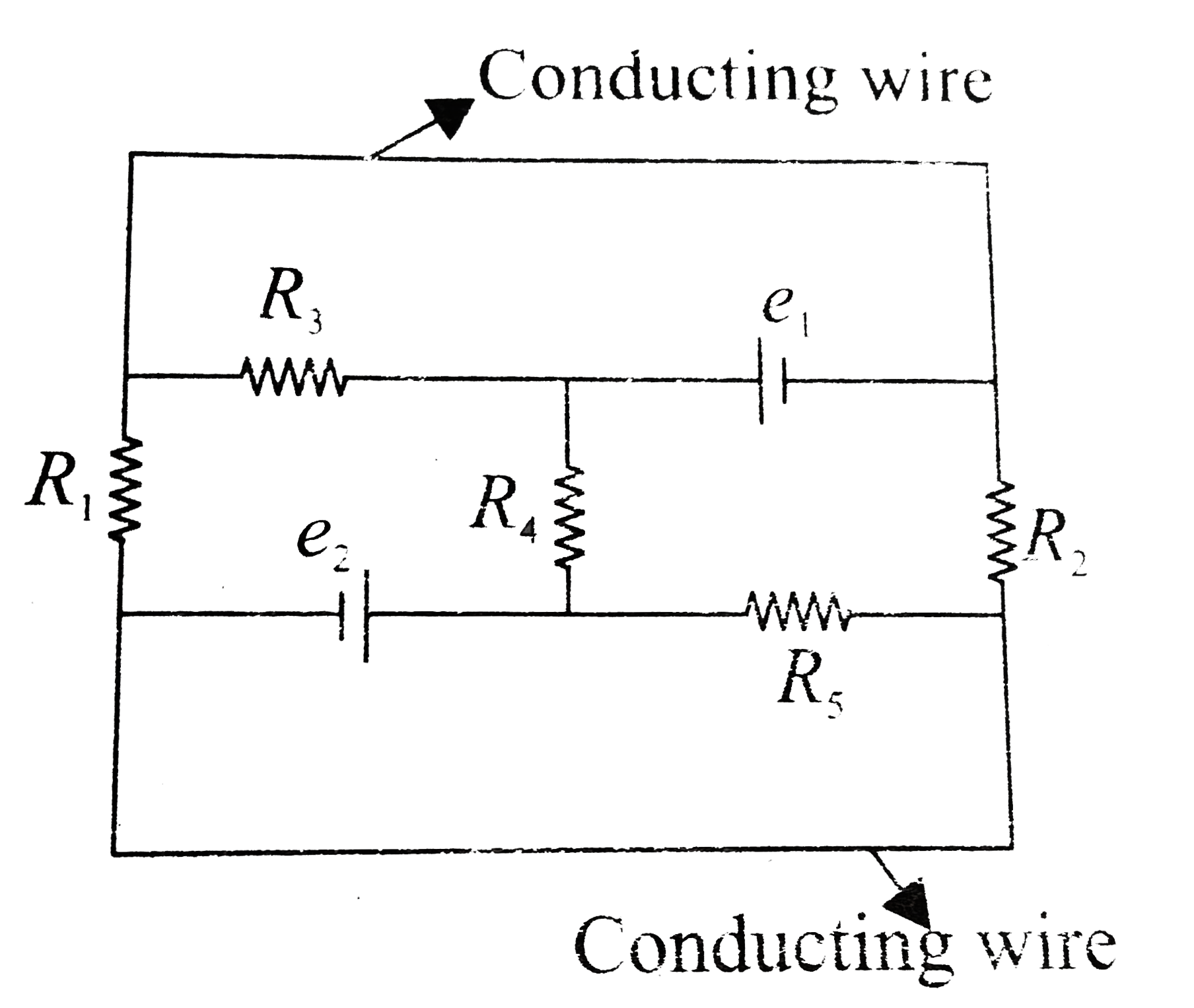
In the given cirucit, determine current through branch having indicated resistor R4 Given R1=R2=4Ω,R3=R4
R5=2Ωε1=5V,ε2=10V
Assign potential at each node as shown in figure.
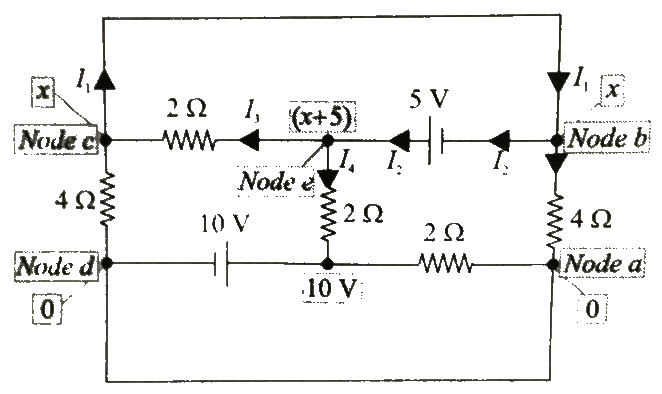
At node 'e', I2=I3+I4
where I3=(x+5)−x2 and I4=(x+5)−102
Hence, I2=(x+5)−x2+(x+5)−102 (i)
Note the outgoing current at node c is equal to incoming current
at node b. Thus our equation is at node C and node b.
(x+5)2+(0−x)4=I2+(x−0)4 (ii)
From Eqs. (i) and (ii), we get x=−2.5V
current through R4is3.75A.
Topper's Solved these Questions
- BOOK - CENGAGE PHYSICSCHAPTER - ELECTRIC CURRENT AND CIRCUITEXERCISE - Single Correct72videos
ELECTRIC CURRENT AND CIRCUIT
- BOOK - CENGAGE PHYSICSCHAPTER - ELECTRIC CURRENT AND CIRCUITEXERCISE - Multiple Correct16videos
ELECTRIC CURRENT AND CIRCUIT
- BOOK - CENGAGE PHYSICSCHAPTER - ELECTRIC CURRENT AND CIRCUITEXERCISE - Exercise 5.250videos
ELECTRIC CURRENT AND CIRCUIT
- BOOK - CENGAGE PHYSICSCHAPTER - ELECTRIC CURRENT & CIRCUITSEXERCISE - Kirchhoff s law and simple circuits15videos
ELECTRIC CURRENT & CIRCUITS
- BOOK - CENGAGE PHYSICSCHAPTER - ELECTRIC FLUX AND GAUSS LAWEXERCISE - MCQ s38videos
ELECTRIC FLUX AND GAUSS LAW
Similar Questions
In the given circuit, E=8V,R1=1Ω,R2=R3=R4=5Ω.The current through the resistance R4 is (in A):
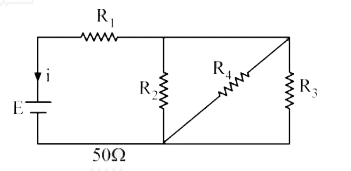 View Solution
View SolutionA constant voltage V=25V is maintained between points A and B of the circuit (Fig). Find the magnitude and direaction of the current flowing through the segment CD if the resistances are equal to R1=1.0Ω,R2=2.0Ω,R3=3.0Ω adn R4=4.0Ω.
 View Solution
View Solution
Knowledge Check
- Question 1 - Select One
In the circuit shown below E1=4.0V,R1=2Ω,E2=6.0V,R2=4Ω and R3=2Ω. The current I1 is
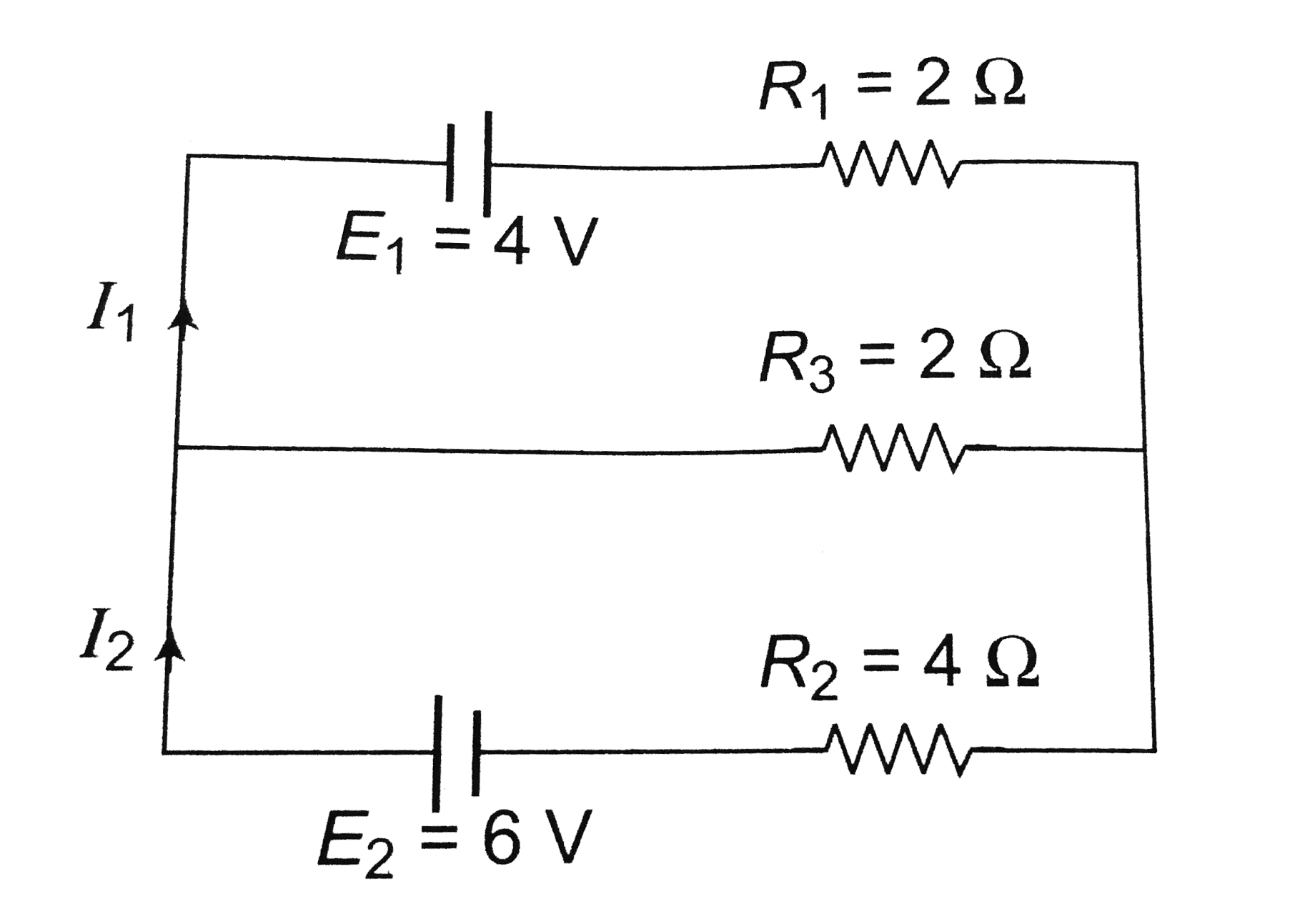 A1.6AB1.8AC1.25AD1.0A
A1.6AB1.8AC1.25AD1.0A - Question 2 - Select One
In the circuit shown in figure
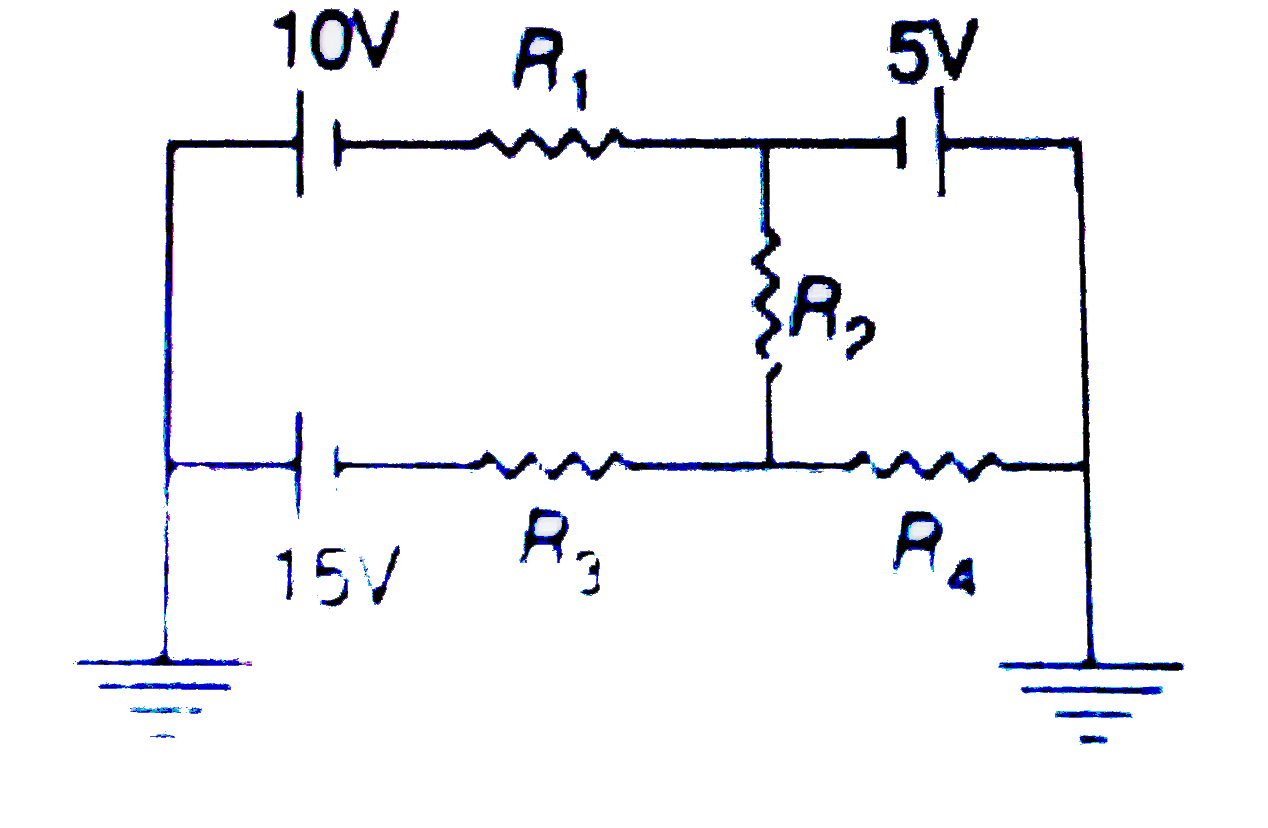
Current through R2 is zero if R4=2Ω and R3=4Ω In this caseACurrent through R3 is 2ABCurrent through R4 is 3ACboth (a) and (b) are correctDboth (a) and (b) wrong - Question 3 - Select One
In the circuit in figure emfE1=14V (internal resistance r1=1Ω),R1=6ΩR2=3.5Ω,emfE2=12v (internal resistance r2=0.5Ω),C1=4μF and C2=2μF.
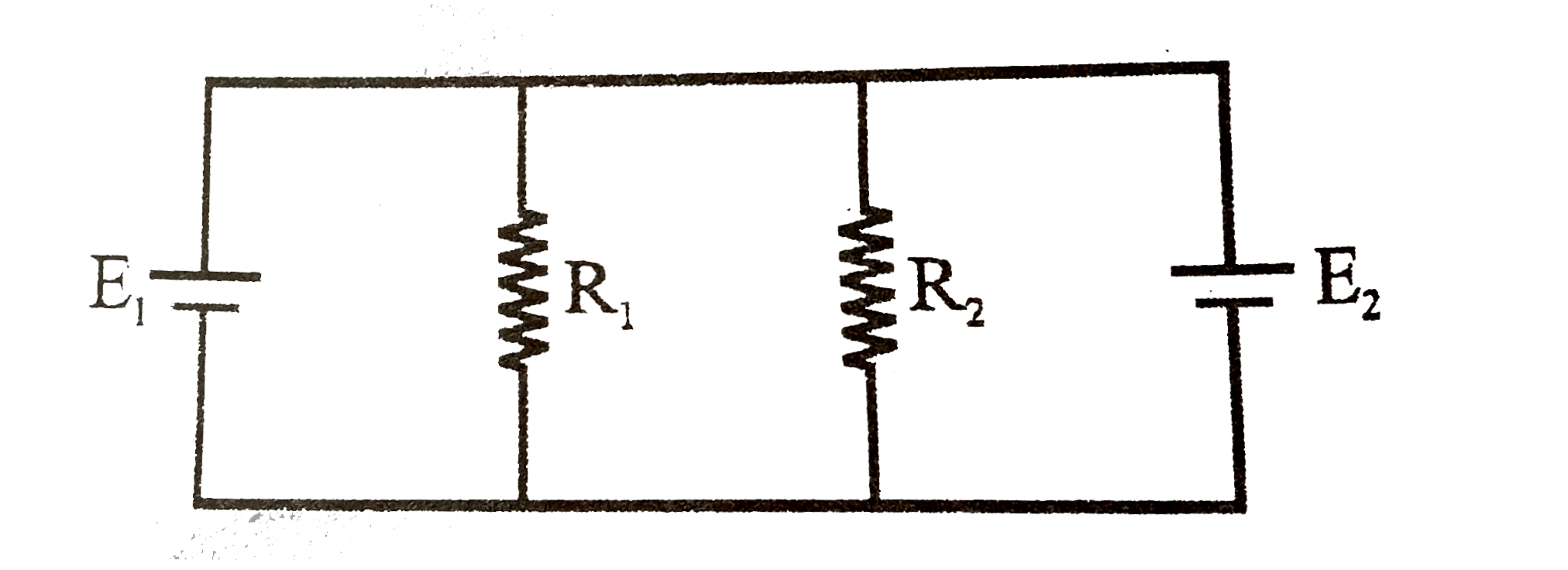
The potential difference across R2 isA10.5VB12.5VC15.0VD26V
Determine the voltage drop across the resistor R1 in the circuit given below with E=60V,R1=18Ω,R2=10Ω.
View SolutionIn the circuit in figure emfE1=14V (internal resistance r1=1Ω),R1=6ΩR2=3.5Ω,emfE2=12v (internal resistance r2=0.5Ω),C1=4μF and C2=2μF.
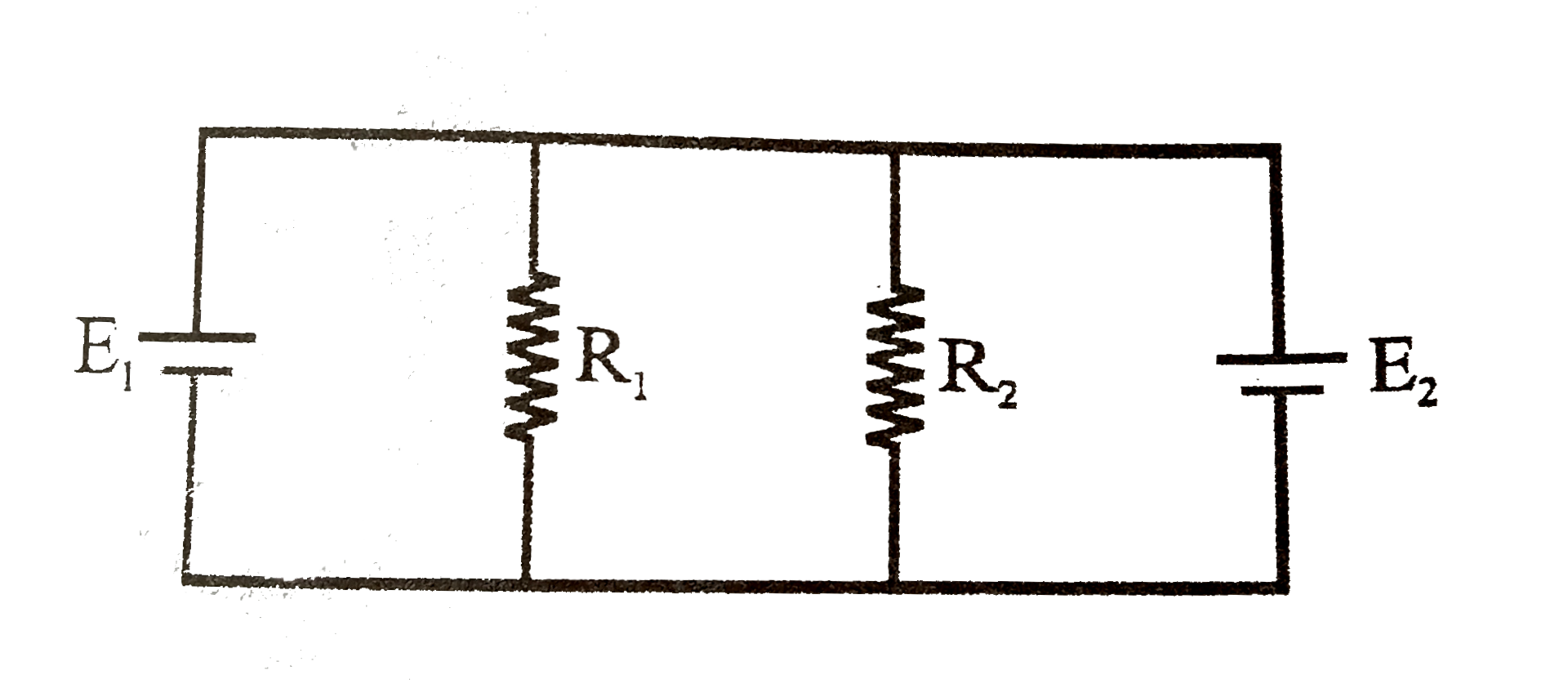
The potential difference across R1 isView SolutionIn the circuit in figure emfE1=14V (internal resistance r1=1Ω),R1=6ΩR2=3.5Ω,emfE2=12v (internal resistance r2=0.5Ω),C1=4μF and C2=2μF.

The charge on capacitor C2 isView SolutionIn the circuit in figure emfE1=14V (internal resistance r1=1Ω),R1=6ΩR2=3.5Ω,emfE2=12v (internal resistance r2=0.5Ω),C1=4μF and C2=2μF.

The potential difference across R1 isView SolutionFind the time constant (in μs) for the given RC circuits in the given order respectively.
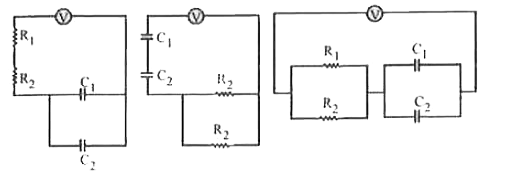
R1=1ω,R2=2ω,C1=4μF,C2=2μFView Solution

